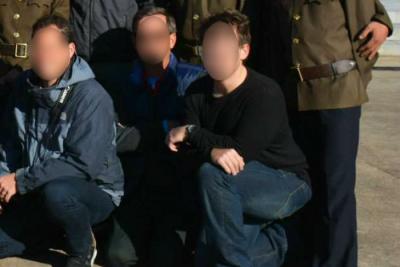Covert surveillance in New Zealand hampered by layers of privacy ethics compliance
New Zealand security agencies have long been vigilant in following up insurgency and from any source or ethnic category.
This had become evident during the 1990s when the agencies had been notably vigilant on any indication of entering New Zealand anyone in the supremacist category, claimed National Press Club president Peter Isaac talking to Greytown Lions.
In this the New Zealand agencies followed the lead of their United States homeland security counterparts which had become preoccupied by the emergence during the 1990s of the survivalism threat most notably in the form of the Unabomber and also the one from the alienated supremacists of which the most horrific outcome was the Oklahoma federal building bombing.
This focus on alienation and survivalism had obscured the developing series of events which led to 911 and the destruction of the World Trade Centre.
When the first attack on this structure was launched in 1993 the trail was insufficiently followed just because at this time the focus was on disaffected whites.
This same diversified focus came to light only much later here following events surrounding Kim Dotcom.
Kim was, and still is, wanted by the United States on copyright infringement grounds
Yet he had sustained a military style assault on his Auckland home and it was proved that he had been investigated by the government’s eavesdropping agency, the GCSB.
The Kim Dotcom affair can be viewed now as causing security agencies to become enmeshed in a web of ethical restraints in regard to the surveillance of locals and those from overseas residing in New Zealand.
The episode with its continuing consent consequences had though demonstrated the willingness of New Zealand’s counter insurgency agencies to work with their foreign counterparts.
Even so this advantage was neutralised in regard to the Christchurch mosque shootings simply because the suspect had no previous brushes anywhere with law enforcement authorities beyond road traffic notices.
This close cross-surveillance had yielded no clues on the mosque suspect Brenton Tarrant just because he had no police record anywhere in terms of violence or threatened violence.
The only tangible footprint was the photo Tarrant had posted of himself in North Korea with what appeared to be his official guides (see above).
Only this rendered him as a person of interest.
Isaac noted that investigators will follow Tarrant’s money trail conundrum centred on how someone from a self-admitted everyday background and without any job had been able to criss-cross the world at will and in some comfort and been able to pay for things like rent and cars and computers and also weaponry and club memberships.
He cautioned the medley of media commentators on dwelling upon any imagined security agency failings.
The Security Intelligence Service and Government Communications Security Bureau could in fact have already intercepted and foiled insurgency attacks from any quarter, but be prevented from crowing about it in order to protect their channels.
Isaac advised the media gallery and associated “commentariat” to pull back from encouraging let alone “stoking” any notion at all that the vast and genuine outpouring of grief somehow exempted the nation as a whole from a perception of involvement with the mosque atrocities here, and thus collective involvement.
Isaac concurred though with the media concensus to the effect that the nation’s lax regulations on guns of all description needed to be drastically tightened up.
But he pointed out that gun regulation was often regarded by the gun owner population which is considered to be around the quarter million mark as a single-issue electoral matter.
Knowing this, politicians trod gingerly around imposing draconian restrictions, a delicacy also engendered by the sporting popularity of firearms.
He disagreed on grounds of unenforceability with imposing restrictions on social media a category that in the aftermath of the mosque atrocity has found itself sharing the same obloquy as automatic rifles.
Social media could not be “squeezed back into the bottle,” he said. As a consumer technology it could only be replaced by “something else.”
Social media he noted followed the path of all new technologies of following a 40 year development time trajectory from initial acceptance to a pervasive presence.
This had been the case with electricity, telephones and cars among others and was replicated by social media which had begun in the United States as DARPANET, a military networking research project and which underpinned the file sharing that enabled social media.
.Isaac, who compiled an early computing text book, “Computing in New Zealand,” noted his own amazement at the righteous indignation of “otherwise perfectly sensible people” when they discovered that their “proudly posted” travel details, shopping outings, restaurant meals, pet photos, school sports days and office outings had all been subsequently acquired in the service of market research.
Isaac had been due to talk to the Lions club about pioneering Greytown newspaperman Richard Wakelin now acknowledged as New Zealand’s first professional journalist in that he had no political or pamphleteering axe to grind.
Wakelin’s successor running the Wairarapa Standard was William Nation, who founded Arbor Day in Greytown, and thus the Green movement.
Nation died in 1930.
Had he lived to practise half a century later, in 1980, Nation would still have been at home with the technology at that time and also with its also application, conjectured Isaac.
Isaac sheeted home the advent of the “pervasiveness” of social media to the epoch between 2004 and 2006 which saw the rapid fire appearance of Facebook, YouTube and Twitter.
This trio of “disruptive” technologies had conclusively ripped away from the hands of career journalists the last restraining gateways to mass access.
This technologies washed away the journalistic guarantor status held since Richard Wakelin’s era just because practitioners found torn out of their hands their traditional responsibility of quality control in the matter of verifying and calibrating degrees of truth.

